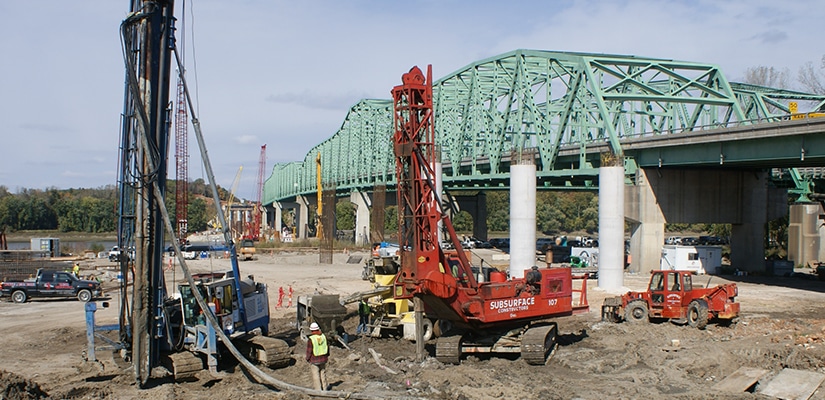Structural engineers probably play the biggest role in a project that will ultimately require the use of ground improvement, and aggregate piers in particular. In this post, we provide key information to help structural engineers select the best ground improvement technique. This post is the fifth part in our series on ground improvement; the most recent posts have covered cost analysis and feasibility of different ground improvement techniques, and key considerations for geotechnical engineers recommending aggregate pier ground improvement.
Selecting the best ground improvement technique
A structural engineer must use the geotechnical report to decide which type of foundation to design, understanding that if the structure can be designed with shallow foundations, the overall construction costs will be less than if deep foundations are used. This decision is less straightforward when the soil conditions are poor and structural engineers are trying to optimize footing sizes to accommodate their column loads. In these marginal soils, aggregate piers provide a significantly greater bearing pressure than just the existing soils, allowing the structure to be supported by shallow foundations.
Drafting specifications for ground improvement bids
An experienced ground improvement contractor can work with structural engineers to make sure aggregate piers can provide the required bearing pressure for the optimal footing size. In many cases, the ground improvement contractor can also start to put some reasonable cost estimates together based off of the information provided by structural engineers. With specialty expertise, ground improvement contractors can help determine whether ground improvement or deep foundations are the most economical option.
For a structural engineer, it’s important to acknowledge consistent and comprehensive specifications for ground improvement as a key part of the construction process. Well-written specifications actually reduce the costs of a construction project. They should be inclusive to every company who should be able to bid on the project, allowing for a wider selection of bids, but also assuring that only experienced and reputable specialty contractors are approved to bid the work. Carelessly written specs can exclude qualified specialty contractors from the bidding process, and that can significantly raise the price of the project. In the case of aggregate piers, the design is often provided by the specialty contractor, introducing even more risk to their work. To ensure you’re working with an experienced specialty contractor, select one who has licensed, professional engineers on staff and a long list of completed projects under their belt.
In order to hire the best company for the job, specifications must allow maximum flexibility in potential technologies and explicitly define performance requirements. Discussing the project with the geotechnical engineer, the owner and a specialty ground improvement contractor allows you to identify this terminology before specifications and requirements are finalized and the bidding process begins.
When writing the specifications, it’s important to consider the following:
Terminology
Subtle phrases in the text that seem general could represent a proprietary technique. Make sure to consult more than one ground improvement contractor when writing specifications so you can use general terminology and ensure you don’t exclude any reputable companies from bidding.
Relationships and responsibilities
During the ground improvement process, boundaries of responsibility between the involved parties can sometimes become blurred. Avoid this whenever possible. Well-written specifications establish where the boundaries are and who is responsible for what. That ensures accountability, and accountability is what makes a job site successful.
Operation constraints
Communicating the constraints of each project and its environment is essential for enabling contractors to provide realistic proposals. Include all agreements, covenants and any other situations that can restrict a contractor.
Performance requirements
Performance requirements are extremely important and should be taken seriously. Specifications should address the following:
- Settlement
- Bearing pressure
- Seismic considerations
- Slope stabilization
- Groundwater control application
- Confirmation/testing
The means and methods of confirmation are also an important part of the project, and specifications should identify them. The specifications should also indicate who is responsible for the confirmation and testing procedures.
If you’re concerned about writing specifications without being exclusionary, simply reach out to consult ground improvement contractors during the creation of your specs. Expertly written specs will yield more and better results during the bidding process.
More about ground improvement
This article is an excerpt from our white paper: Desktop Guide to Aggregate Pier Ground Improvement. To learn more about ground improvement, download the complete guide, or contact us at 866-421-2460.



